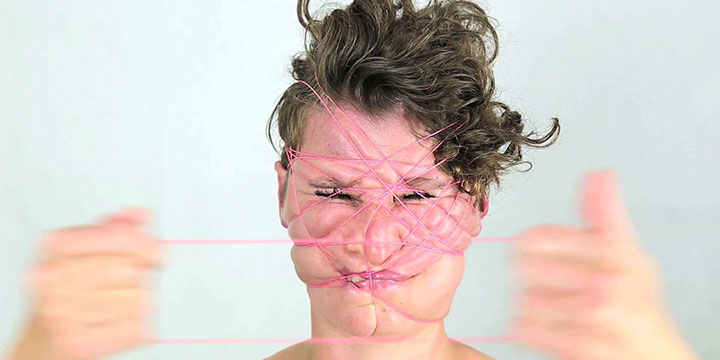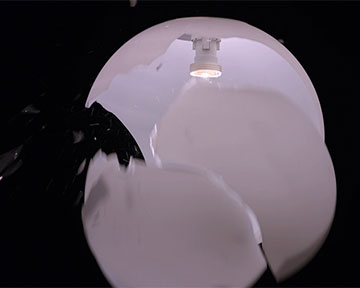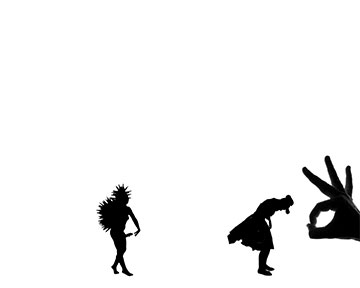Videoart at High Noon
Critics‘ Pick: Nicole Büsing and Heiko Klaas recommend video works shown at the Art Cologne and Art Brussels art fairs in the spring of 2018.
Cologne/Brussels. How can video art be presented in a suitable way? There is, of course, the museum variant, situated ideally in a black box fitted with seats and a perfect sound system. Then we have monitors installed in the context of exhibitions, screenings at festivals or cinema shows as programmes accompanying exhibitions. Besides this, video works are regularly presented at special events, such as the format “Videoart at Midnight”, where a choice of works by different artists is shown once a month at a cinema in Berlin.
In addition to this, since 2012, “blinkvideo” has become established as a convenient online platform for video art. While on “blinkvideo” you can enjoy watching video art comfortably from your couch, at your desk or on a train, viewing videos at art fairs often turns out to be quite a challenge. To concentrate on a work of moving pictures in the bustling atmosphere of an art fair requires maximum attention. And yet, this year’s Art Cologne and the simultaneous Art Brussels once more featured a number of intriguing video works, some of which we would like to present you here.
Petra Rinck Galerie from Düsseldorf presented at the Art Cologne the 15-minute video “You’re Gonna Pay For It Now, Now You’re Gonna Pay For It” (2016), by the British artist William Hunt. The native London artist, born 1977, is known for persistently pushing the limits of what is physically bearable. In his performance video, recorded at the Düsseldorf exhibition space KAI 10, he repeatedly presses his face – onto which yellow, red and blue paint is applied alternately – against an airbag, all the while citing the title of the work in an intonation reminding of an auctioneer.
The Cologne-based Philipp von Rosen Galerie presented two works by the artist Rebecca Ann Tess. In “Upper” (2016) the artist living between Seoul and Berlin films the tops of the imposing towers of the Tuscan town of San Gimignano, an important trading centre in the 13th and 14th century, whose most influential merchant families sought to outmatch one another by building ever higher towers. The video is backed by the unnerving sound of crickets. One could say, perhaps, that in this film the artist has traced the precursors of global capitalism.
In the 22-minute video “LOVE AFFAIR” by Katja Aufleger, who was born in 1983 and studied under Andreas Slominski in Hamburg, suspense is what the Berlin artist works with. The video was on view at the stand of the Hamburg-based Galerie Conradi. Electric lamps in a variety of designs, set against a black background, keep appearing on the scene to finally suffer the same fate: they are fired at from the off and sooner or later give out, by bursting, burning out or even going up in smoke. Representing a kind of execution video with an ironic undertone, “LOVE AFFAIR” can be read as a swan song on obsolete technologies, but also as a metaphor for the threat to all that exists.
Quite a different approach reveals itself in the extremely detailed and playful film “The Sweet Lemon Ballad” by the Zurich painter Klodin Erb, born 1963, presented by the Zurich Gallery Lullin + Ferrari. Here, it is a lemon that takes centre stage, and this in several regards. First as a historically charged motif reappearing time and again, especially in fruit still lifes. Here, the lemon leaves its familiar pictorial space, enters a surrealistically charged world and goes on an adventure that ultimately leads to a tragic ending. Likewise, it represents the alter ego of the artist, who in her lemon costume ventures through a painterly scenery but also into the real world, to finally meet her botanical counterpart.
Very political, in turn, is the work “Requiem for M” (2010) by the Philippine artist Kiri Dalena, born 1975, at the stand of the Michael Janssen Galerie, Berlin, who for Art Cologne cooperated with 1335 MABINI gallery from Makati City, Metro Manila. It was the so-called Maguindanao Massacre, in the course of which 58 people, including 32 journalists, were murdered, which caused Dalena to visit the site just a few days after the incident. The resulting film material – showing burning candles, bullet casings, armed and mourning characters – has been alienated by the filmmaker by various means. People and vehicles are moving backwards, as if what happened could be undone. Moreover, a subtle slow motion underscores the nightmarish atmosphere of the images, underlaid with a lulling sound.
The ca. 4-minute video “Terry, William and The Gang” (2017) was developed in a collaboration between the dancer and choreograph Dana Ruttenberg and the director and actor Oren Shkedy. At Art Brussels, the video by the Israeli artist duo was presented at the stand of Chelouche Gallery, based in Tel Aviv. The short film at first reminds of an animated paper cut. Black silhouettes of humans are pictured dancing in front of a white background. In fact, they are live dancers who initially had performed on a theatre stage. In the video, sound was left out entirely. Ruttenberg and Shkedy focussed on translating the dancers’ movements into two-dimensional silhouettes using digital technology. Any individual features were thus blocked out. What remains are the figures and their movements.
The video works featured at Art Cologne and Art Brussels display many different aspects of the medium: conceptual and imaginative-narrative works taking turns with performance videos and films with alienated, documentary material and digital adaptions of theatrical performance practices. In this sense, collectors and video art lovers could experience very balanced offerings at both art fairs.
Nicole Büsing & Heiko Klaas
24 June 2018
































